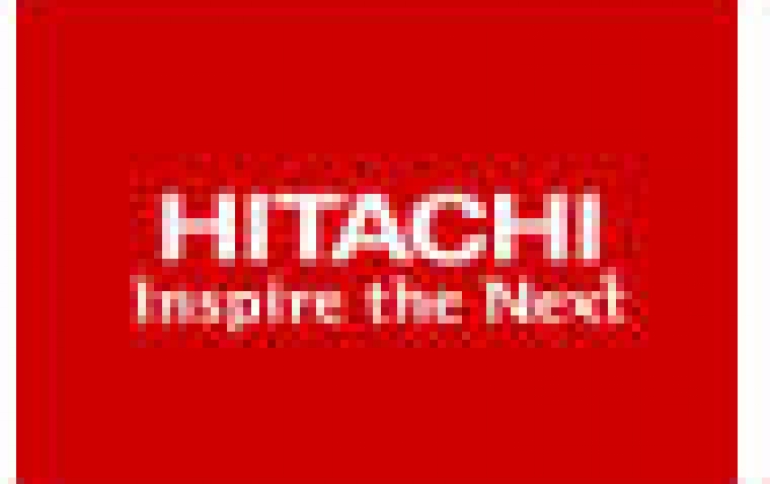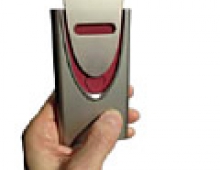
Hitachi Eyes 1TB Desktop Drives
Perpendicular recording technology will boost hard drive storage capacity, company says.
As PCWorld.com reports....
Hitachi Global Storage Technologies will later this year begin selling hard drives based on perpendicular recording, a yet-to-be commercialized recording method that should enable engineers to continue increasing drive storage capacity beyond today's limits, Hitachi is due to announce Monday.
The company is already testing sample drives based on perpendicular recording and says the technology could allow for 1TB desktop drives or 20GB Microdrives in 2007.
Perpendicular recording is perhaps the most significant near-term step in the evolution of hard drive technology. The method is similar to the longitudinal recording used in today's drives in that it relies on magnetically charged particles for data storage. In today's drives, the north and south poles of the magnetic particles run parallel to the disc but in the new method they are arranged perpendicular to the disc, as the name suggests.
The result of this new arrangement is that each particle occupies a smaller area of the disk's surface and so more particles can be crammed onto the disk. This is measured as the areal density and today's most advanced drives can store between 100 gigabits and 120 gigabits of data in a square inch of disk space.
"Without [perpendicular recording], existing technology will stall at about 120- or 130 gigabits per square inch," says John Best, chief technologist at Hitachi Global Storage Technologies. "Longitudinal recording is running into significant problems with bit size."
Coming Soon?
In contrast, Hitachi sees drives based on the new method with areal densities of around 230 gigabits per square inch in 2007, Best says. Such a density would enable the 1TB, 3.5-inch drive and 20GB, 1-inch drive, he says.
Hitachi's first drives are likely to offer a more conservative storage density of about 120 gigabits per square inch and be available later this year. The company is currently field testing a 100GB, 2.5-inch drive based on an 80 gigabits per square inch version of the technology, says Best.
Good news for users is that the new drives shouldn't be substantially different from current drives in terms of mechanical performance or price.
Other hard drive makers are also busy researching and developing the technology and at least one of Hitachi's competitors has also announced plans for drives based on perpendicular recording.
Toshiba is planning to put on sale shortly two 1.8-inch drives based on perpendicular technology: a 40GB drive during the April to June quarter and an 80GB drive during the July to September quarter, it says. The drives are similar to those currently used in the IPod and other digital music players and could mean higher capacity or physically thinner players for users.
The drive's greater recording density, at 133 gigabits per square inch, will enable about 40GB to be stored on a single disk platter. The result will be a reduction from 8 millimeters to 5 millimeters in the thickness of a 40GB drive and an increase in the maximum capacity of the 1.8-inch range to 80GB from 60GB.
Hitachi Global Storage Technologies will later this year begin selling hard drives based on perpendicular recording, a yet-to-be commercialized recording method that should enable engineers to continue increasing drive storage capacity beyond today's limits, Hitachi is due to announce Monday.
The company is already testing sample drives based on perpendicular recording and says the technology could allow for 1TB desktop drives or 20GB Microdrives in 2007.
Perpendicular recording is perhaps the most significant near-term step in the evolution of hard drive technology. The method is similar to the longitudinal recording used in today's drives in that it relies on magnetically charged particles for data storage. In today's drives, the north and south poles of the magnetic particles run parallel to the disc but in the new method they are arranged perpendicular to the disc, as the name suggests.
The result of this new arrangement is that each particle occupies a smaller area of the disk's surface and so more particles can be crammed onto the disk. This is measured as the areal density and today's most advanced drives can store between 100 gigabits and 120 gigabits of data in a square inch of disk space.
"Without [perpendicular recording], existing technology will stall at about 120- or 130 gigabits per square inch," says John Best, chief technologist at Hitachi Global Storage Technologies. "Longitudinal recording is running into significant problems with bit size."
Coming Soon?
In contrast, Hitachi sees drives based on the new method with areal densities of around 230 gigabits per square inch in 2007, Best says. Such a density would enable the 1TB, 3.5-inch drive and 20GB, 1-inch drive, he says.
Hitachi's first drives are likely to offer a more conservative storage density of about 120 gigabits per square inch and be available later this year. The company is currently field testing a 100GB, 2.5-inch drive based on an 80 gigabits per square inch version of the technology, says Best.
Good news for users is that the new drives shouldn't be substantially different from current drives in terms of mechanical performance or price.
Other hard drive makers are also busy researching and developing the technology and at least one of Hitachi's competitors has also announced plans for drives based on perpendicular recording.
Toshiba is planning to put on sale shortly two 1.8-inch drives based on perpendicular technology: a 40GB drive during the April to June quarter and an 80GB drive during the July to September quarter, it says. The drives are similar to those currently used in the IPod and other digital music players and could mean higher capacity or physically thinner players for users.
The drive's greater recording density, at 133 gigabits per square inch, will enable about 40GB to be stored on a single disk platter. The result will be a reduction from 8 millimeters to 5 millimeters in the thickness of a 40GB drive and an increase in the maximum capacity of the 1.8-inch range to 80GB from 60GB.





















